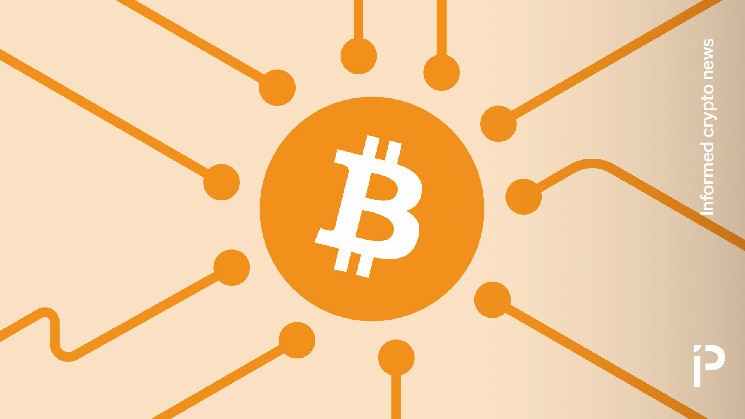Bitcoin Core developer proposes new type of pruned node

Bitcoin Core developer James O’Beirne has proposed a new way to run a Bitcoin pruned node. His proposal overhauls the conventional method for pruning Bitcoin’s blockchain.
Pruning, of course, has been available to Bitcoin node operators for years.
- A full node is a computer or custom machine that validates proposed Bitcoin transactions against consensus violations like double-spending or increasing the quantity of coins above Bitcoin’s 21 million hard cap. Full nodes validate transactions against Bitcoin’s ruleset plus an unabridged copy of Bitcoin’s ledger of transactions. Bitcoin’s full blockchain is currently over 464GB in size, so most full nodes install a hard drive with storage exceeding 1TB.
- A pruned node drastically reduces the amount of hard drive space required to validate incoming transactions. Pruning eliminates the need to download and store old transactions with a sufficiently high number of confirmations. For instance, a pruned node operator might consider any transactions that have been validated for 100 successive blocks as immutable, allowing their computer to compress all data prior to 100 blocks ago into a single, cryptographic hash.
With standard Bitcoin Core software, node operators enable pruning by setting a maximum number of megabytes they are willing to store in their bitcoin.conf file. They can also modify this setting in the settings area of Bitcoin Core’s graphical user interface (GUI).
The two largest software clients for Bitcoin nodes, Bitcoin Core and Bitcoin QT, can be pruned. However, once the node owner has activated pruning, they may not transmit old blocks over the Bitcoin network nor verify old wallets.
Of course, pruning has trade-offs. First, however, to O’Beirne’s proposal.
James O’Beirne proposes a new way to run a Bitcoin pruned node
O’Beirne has proposed an update to the method by which full nodes prune. This proposal is part of his larger assumeUTXO protocol project.
Rather than the status quo — setting a number of blocks and compressing historical blocks prior to that milestone — O’Beirne’s assumeUTXO is an experimental way for new Bitcoin full nodes to delay their need to verify historical transactions until the user receives recent transactions.
AssumeUTXO-compatible node clients would contain a hard-coded hash of the conditions necessary to spend all bitcoin (the UTXO set) as of a safe, recent point in time (O’Beirne’s variant of the popular Bitcoin Core client, Bitcoin Core #25740, supports assumeUTXO).
Ordinals enable first-ever Bitcoin sovereign rollup
Read more: This Bitcoin Core update will protect full node operators from hacks
Because of its importance, developers would have to check any revision of the hard-coded assumeUTXO hash for correctness during code review. As long as the snapshot hash is correct, it would allow pruned node operators to opt-in to disregarding full data prior to that hash. This trimmed blockchain file would be much smaller than Bitcoin’s entire, half-terabyte blockchain.
In addition, O’Beirne’s proposed update could add background validation to the assumeUTXO protocol. The assumeUTXO proposal adds serialized UTXO sets, reducing the time needed to sync a new Bitcoin node. It also reduces the storage space required to save the Bitcoin blockchain.
Recap of the assumeUTXO pruned node proposal
In summary, James O’Beirne proposes that pruned node operators may optionally trust a developer-reviewed snapshot of the blockchain at a specific point in history. A pruned node can use that snapshot hash to reduce the large file size of Bitcoin’s blockchain.
Once the node has passed an accuracy check of Bitcoin’s ledger using that hash, the node can delete the information used to perform the check the next time the software client restarts. After abridging this data, the node has become a pruned node. Like other pruning techniques, O’Beirne’s proposed feature reduces blockchain storage requirements.
Developers are still working on finalizing the assumeUTXO proposal. To be clear, assumeUTXO is not in consensus with the main Bitcoin network today. Development, safety checks, and code review are ongoing. Bitcoin Core developers are discussing O’Beirne’s proposal, debating its pros and cons, and debugging drafts of code.
For more informed news, follow us on Twitter, Instagram, and Google News or subscribe to our YouTube channel.






 Bitcoin
Bitcoin  Ethereum
Ethereum  Tether
Tether  USDC
USDC  TRON
TRON  Dogecoin
Dogecoin  Cardano
Cardano  Bitcoin Cash
Bitcoin Cash  Chainlink
Chainlink  LEO Token
LEO Token  Stellar
Stellar  Monero
Monero  Zcash
Zcash  Litecoin
Litecoin  Hedera
Hedera  Dai
Dai  Cronos
Cronos  OKB
OKB  Tether Gold
Tether Gold  Ethereum Classic
Ethereum Classic  KuCoin
KuCoin  Gate
Gate  Algorand
Algorand  Cosmos Hub
Cosmos Hub  VeChain
VeChain  Dash
Dash  Tezos
Tezos  Stacks
Stacks  TrueUSD
TrueUSD  IOTA
IOTA  Basic Attention
Basic Attention  Theta Network
Theta Network  Decred
Decred  NEO
NEO  Qtum
Qtum  Synthetix
Synthetix  Ravencoin
Ravencoin  0x Protocol
0x Protocol  DigiByte
DigiByte  Zilliqa
Zilliqa  Nano
Nano  Numeraire
Numeraire  Siacoin
Siacoin  Waves
Waves  Ontology
Ontology  Enjin Coin
Enjin Coin  Status
Status  BUSD
BUSD  Pax Dollar
Pax Dollar  Hive
Hive  Lisk
Lisk  Steem
Steem  Huobi
Huobi  NEM
NEM  OMG Network
OMG Network  Augur
Augur  Bitcoin Gold
Bitcoin Gold  Ren
Ren  Bitcoin Diamond
Bitcoin Diamond